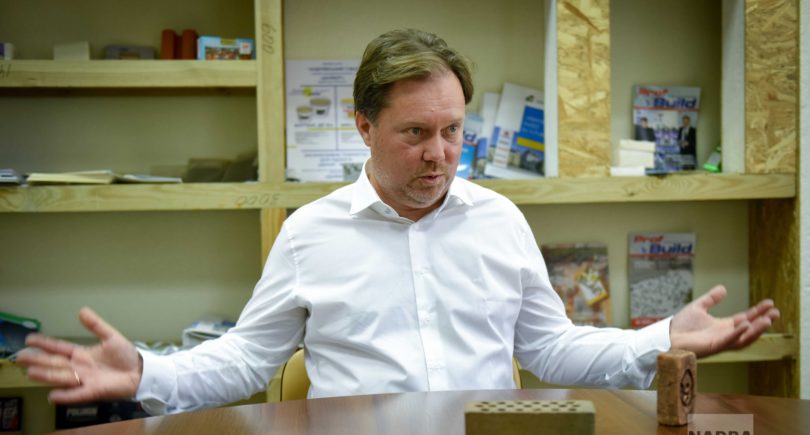
Opinions Infrastructure gas 756 16 June 2025
The volume of imports required for Ukraine is insignificant compared to the EU, but there are no prerequisites for a significant reduction in gas prices
Following the rocket attacks on gas production infrastructure in early 2025, Ukraine’s domestic gas production dropped significantly, threatening the end of the heating season and necessitating emergency imports. Ukraine has now started filling its underground gas storage facilities with gas for the next season, but is facing some difficulties in this process.
Picking up the pace of injection
Ukraine started importing gas in late winter. Then, after massive Russian strikes, 800 million cubic meters were urgently transported to balance the system and in case of force majeure. Fortunately, this did not happen, and this resource will be used during the next winter off-peak period, along with another 700 million cubic meters that have already been purchased. In addition, Naftogaz has received financing of €410 million to purchase almost 1 bcm more and is currently actively working with international financial institutions and the Norwegian government to raise additional funds.
As of now, we are seeing a positive trend in restoring damaged facilities and stabilizing production, and we have a good pace of new drilling. For example, over the past four months, Ukrgasvydobuvannya alone has put 24 new wells into operation. The company’s specialists also set another record for sinking, drilling 38% more than in the same period in 2024. It should also be noted that from April 1 to October 31, Ukrnafta will fulfill special obligations to supply gas at prices set by the government. This will accelerate the filling of gas storage facilities and reduce imports.
Since the beginning of 2025, according to the GTSOU, 1.9 billion cubic meters of gas have been transported from Europe to Ukraine, while 0.3 billion cubic meters have left the GTS. Main supply routes: Hungary, Poland, Slovakia, Moldova and Romania. Currently, our country has more than 60 million cubic meters of guaranteed daily capacity to import the resource. In addition, the Trans-Balkan route from the Greek LNG terminal to Ukraine was opened on June 1. And although the transportation tariff is €7.8/MWh, which is 20% less than usual, it is still high compared to Polish, Hungarian and other destinations. The fact is that the route passes through several countries that charge separate fees, making it less competitive.
Since mid-April, physical imports to Ukraine have amounted to 15-20 million cubic meters per day. In May, we managed to put more than 1 billion cubic meters of gas into the underground – our own production plus imports. However, we need more in the summer to feel more confident in the winter.
Given that companies are still restoring facilities and stabilizing production, imports should amount to 700-900 million cubic meters of gas per month. This rate of injection, together with the Ukrainian resource, will allow accumulating 13.5-14 billion cubic meters of natural gas by the beginning of the heating season.
Ukrainian gas prices for industry are on the rise
In May, the Ukrainian market demonstrated a sharp rise in gas prices, which is in clear contrast to the stable dynamics of April. While during the second month of spring, futures prices for the May resource grew very moderately – from UAH 15.5 to 15.9 thousand per 1,000 cubic meters excluding VAT, i.e. by less than 3%, in May, quotations for June jumped by almost 30% to over UAH 20,000.
This price jump can be explained by several factors. First and foremost, traders and industrial consumers stepped up purchases to stock up on the resource. This created a chain reaction in the market. In addition, the market expects a significant shortage amid growing demand, as well as increased consumption due to seasonal factors. Domestic prices were also affected by the behavior of European hubs: in May, TTF quotations were rising, which put pressure on Ukrainian indicators due to import parity.
Overall, there are no prerequisites for a significant reduction in gas prices in Ukraine. But the direction in which the price will fluctuate depends on three main components:
- The situation on the EU gas market. Rising prices in Europe will put upward pressure on the Ukrainian market, as gas imports are economically unprofitable without discounts or subsidies. If the growth trend at the hubs continues, domestic prices will have to be “pulled up”.
- Demand and consumption. The amount of gas available for industry is limited: the state maintains a social priority to accumulate the resource primarily for the regulated sector, and the amount of gas traditionally directed to the commercial sector has decreased. This means that even with stable demand, the balance will be prone to a deficit, which will stimulate growth.
- Security situation. An escalation of the war or repeated attacks on the gas infrastructure could instantly trigger a price reaction due to possible shortages or actual capacity losses. Such incidents already occurred in the first quarter of 2025 and remain relevant for the summer.
As practice shows, the market prices not only the fundamental factors of supply and demand, but also the risks associated with the security situation, infrastructure damage, and uncertainty. Obviously, gas will remain a strategic and valuable resource, and the industry will continue to depend on the quality of planning, transparent pricing mechanisms and stable domestic production.
LNG supplies to Europe break records
Global gas demand growth will slow slightly this year amid tense market conditions and heightened economic uncertainty. At the same time, the International Energy Agency predicts that global LNG supplies will increase by 5% or 27 billion cubic meters due to the launch of several large-scale projects. And the main candidates for this resource will be Europe and Asia. Analysts say that imports of liquefied natural gas to the EU will increase by more than 30 billion cubic meters, reaching levels close to historic highs.
According to ENTSOG’s summer forecast, Europe needs to pump 57 bcm of gas into storage facilities to reach the 90% target to prepare for winter. Realizing all the risks, the EU has started to work proactively and is reducing the mandatory utilization rate to 83% with a flexible injection deadline from October 1 to December 1. It also provides for a 4% deviation in case of unfavorable market conditions, such as supply disruptions and high prices.
If we look at the routes of gas imports to the European Union, the picture looks like this: LNG accounts for 45.8%, North Sea – 29.7%, North Africa – 10.9%, Turkish Stream – 5.5%, UK – 3.7%, Caspian Sea – 3.7%, Turkey – 0.6%. Norway is expected to maintain close to record export levels, and demand for LNG will remain key, with supplies already breaking records this year. According to Kpler, in January-April, the region purchased 26.5 million tons of US LNG, or 77% of total US imports. And this is not the limit. GIE states that in May, the average daily shipment of the resource from European terminals increased to 442 million cubic meters per day. Compared to April, the increase was only 5%, but compared to May last year, it was 50%.
The volume of imports required for Ukraine is quite insignificant compared to the EU. According to various estimates and scenarios, we need 4 to 6 billion cubic meters to successfully pass the winter cooling-off period, and we have already contracted part of the resource and are pumping it into underground storage facilities. The rest will have to be bought on the market, competing with other countries, including our neighbors. Given the lack of transit of Russian gas, they will be actively looking for a profitable resource to cover their own needs.
Are there reasons for concern?
Although the EU’s gas storage facilities have already crossed the 50 percent capacity mark, they are still less full than last year.
As of June 9, according to the GIE, the EU’s UGS facilities held 51.8% of gas, while in the same period in 2024 it was 71.9%, and in 2023 it was 71.3%. Record LNG supplies are not yet enough to quickly fill the storage facilities. And amid planned shutdowns or possible interruptions, concerns about future summer supplies are growing.
What trends can be observed:
- Struggle for resources. If it is abnormally hot in Asia in the second half of the summer, global prices will skyrocket and European countries will have to pay a premium for attracting cargo.
- Decrease in cost. There are risks that LNG consumption will decline amid the trade war, which will lead to a drop in prices.
- Green generation and repairs. Reduced electricity production from renewable energy sources increases demand for gas. For example, in Germany, in the first four months of the year, clean sources generated the least amount of electricity in more than 10 years. To compensate for the decline, fossil fuels were used – their share rose to the highest level since 2018.
- Force majeure situations. The blackout in Spain at the end of April showed that no country is 100% insured. If there are problems, especially at night, when solar generation is unable to cover demand, gas is indispensable.





